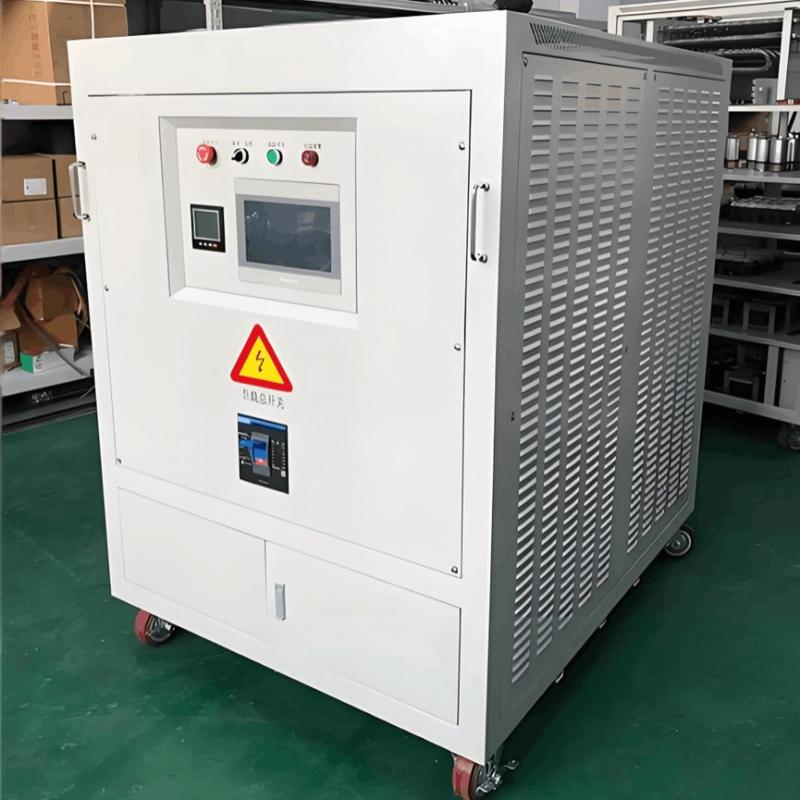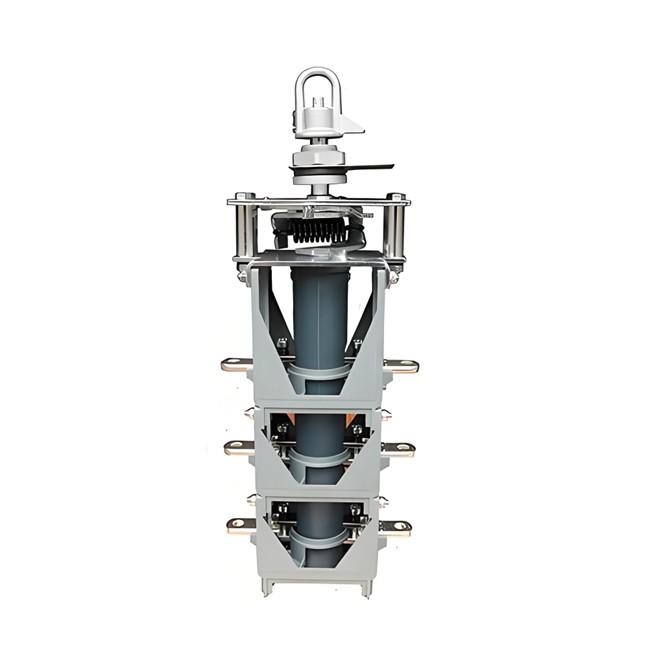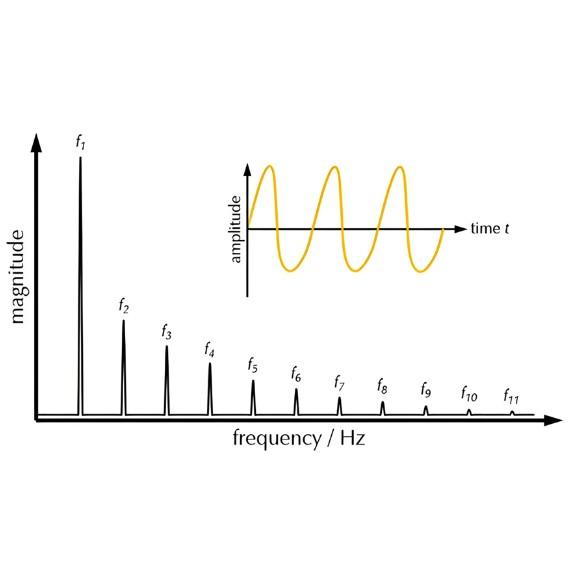1 Basic Structure, Operating Characteristics and Special Requirements of Transformers for Wind Power Generation
1.1 Basic Structure of Transformers
(1) Core Structure
Transformers for wind power generation adopt core materials with high magnetic permeability to reduce energy losses. In application, the core usually requires special treatment to adapt to the harsh environment of long - term high humidity and high salinity. Especially in offshore wind farms, the corrosion resistance of the core is particularly important.
(2) Winding System
The winding is an important component in transformers for wind power generation and is usually wound with copper or aluminum wires. The winding design of transformers for wind power generation needs to consider the frequent changes in voltage and current caused by wind speed fluctuations, ensuring that the winding can operate stably for a long time under high loads.
(3) Cooling and Heat Dissipation System
Transformers for wind power generation need an effective cooling system to ensure that they will not be damaged due to overheating during high - load operation. Common cooling methods include oil - immersed type and natural air - cooled type. Oil - immersed transformers take away heat through the circulation of oil and are suitable for large - power wind farms; while air - cooled transformers are more suitable for scenarios with smaller power and milder environments.
1.2 Operating Characteristics
The operating characteristics of transformers for wind power generation: Wind power generation is unstable, and the power generation capacity fluctuates with changes in wind speed. Therefore, the transformer needs to have a high load adjustment capability and be able to adapt to frequent load fluctuations. Different from traditional grid transformers, transformers for wind power generation are often in a partial load state, which puts forward special requirements for their energy efficiency and heat dissipation capabilities.
1.3 Special Requirements in Wind Power Generation Environment
(1) Resistance to Wind Speed Fluctuations
The power generation of wind power generation fluctuates with changes in wind speed, and this fluctuation may lead to voltage instability. Therefore, transformers for wind power generation need to have corresponding adjustment capabilities to prevent impacts on the power grid.
(2) Adaptation to Harsh Environmental Conditions
Most wind farms are built in harsh environments. Therefore, transformers for wind power generation must have good corrosion resistance and moisture - proof capabilities. For alpine wind farms, transformers for wind power generation need to cope with extreme climate conditions such as low temperature and high wind speed.
(3) Requirements for Remote Monitoring and Maintenance
Because wind farms are usually located in remote areas, the cost of fault maintenance for transformers for wind power generation is relatively high. Therefore, a remote monitoring system needs to be established to monitor the operating status of the transformer in real time.
2 Performance of Transformers for Wind Power Generation
2.1 Analysis of Electrical Performance
(1) Voltage Regulation Capability
One of the core tasks of transformers for wind power generation is to boost the low voltage output by wind turbines to a high voltage for long - distance power transmission. Therefore, the voltage regulation capability is a key indicator to measure the electrical performance of transformers for wind power generation. Usually, the step - up range of the transformer is designed to adapt to the output fluctuations under various wind speeds, ensuring stable voltage output and reducing impacts on the power grid.
(2) Short - circuit Impedance and Fault Protection
The short - circuit impedance of transformers for wind power generation directly affects the stability during short - circuit faults. A lower short - circuit impedance can improve the fault response speed of the system, but it may also lead to an increase in current fluctuations of the system when the wind speed fluctuates. Optimizing the short - circuit impedance design not only helps reduce short - circuit current but also improves the operating safety of the transformer and the stability of the power grid.
(3) Loss and Efficiency
The losses of transformers for wind power generation are mainly divided into copper loss and iron loss. Copper loss is the electrical energy loss caused by the winding resistance, while iron loss is related to the magnetization process of the iron core. In the wind power generation scenario, the transformer needs to have efficient energy conversion capabilities to reduce losses during transmission and maximize the utilization rate of wind energy. Therefore, selecting high - efficiency materials and optimizing the design can significantly reduce losses and improve overall efficiency.
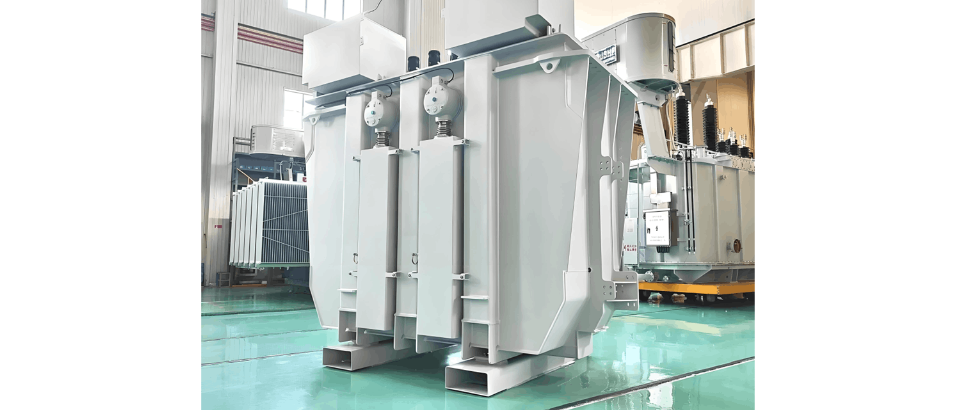
2.2 Analysis of Thermal Performance
(1) Heat Loss and Heat Dissipation
Transformers for wind power generation generate a large amount of heat during operation, especially under high loads. Excessively high temperatures may lead to the deterioration of winding insulation materials and even cause safety accidents. Therefore, the management of thermal performance is crucial for the safe operation of the transformer. Oil - immersed transformers dissipate heat through the circulation and cooling of transformer oil and are suitable for high - power scenarios; while air - cooled transformers dissipate heat through natural wind and are suitable for wind farms with relatively high wind speeds. Optimizing the design of the cooling system to ensure that heat can be dissipated in a timely manner is the key to extending the service life of the transformer.
(2) Thermal Stress and Life Prediction
Due to the load fluctuation of wind power generation, the thermal stress of transformers for wind power generation changes greatly, especially when the power changes sharply. Under the long - term environment of thermal stress fluctuation, the insulation materials of the transformer will gradually age, affecting the service life. Through thermal simulation analysis and life prediction models, the reliability of the transformer under different working conditions can be better evaluated, and corresponding optimization suggestions can be put forward.
2.3 Analysis of Insulation Performance
(1) Selection of Insulation Materials
The insulation performance of transformers for wind power generation is the basis for ensuring their safe operation. The insulation system of the transformer includes solid insulation materials and liquid insulation materials. In wind farms, especially offshore wind farms, the environment of high humidity and high salinity may accelerate the aging and failure of insulation materials.
(2) Partial Discharge and Withstand Voltage Capability
Partial discharge is one of the main causes of insulation failure of transformers for wind power generation. Due to the large voltage fluctuations in wind power generation systems, the transformer needs to have a strong withstand voltage capability, especially when the wind speed changes sharply, to avoid the occurrence of partial discharge. By using new insulation materials and optimizing the winding layout, the withstand voltage capability of the transformer can be significantly improved, and the occurrence of partial discharge phenomena can be reduced.
3 Reliability Evaluation, Influencing Factors and Solutions to Common Faults of Transformers for Wind Power Generation
3.1 Reliability Evaluation Models
(1) Failure Mode and Effects Analysis
Failure Mode and Effects Analysis is an important tool for evaluating the reliability of transformers. By analyzing the possible failure modes of transformers for wind power generation under different working conditions, its impact on the overall system is evaluated. The application of Failure Mode and Effects Analysis can help wind power operation and maintenance personnel identify potential risks in advance, take preventive measures in a timely manner, and reduce the failure rate of transformers.
(2) Life Prediction Model
The service life of transformers for wind power generation is usually affected by multiple factors such as material aging, thermal stress, and mechanical vibration. Through the life prediction model, combined with on - site data, the remaining life of the transformer can be predicted, and then corresponding maintenance strategies can be formulated. The accuracy of life prediction is crucial to the reliability of the transformer and can significantly reduce the occurrence rate of sudden failures.
3.2 Main Influencing Factors
(1) Impact of Operating Environment
The environment where the wind farm is located has a significant impact on the reliability of transformers for wind power generation. The high humidity and high salinity environment of offshore wind farms may accelerate the corrosion of equipment, while the extreme temperature changes in inland wind farms (such as the low temperature in alpine regions) will increase the aging speed of insulation materials. Therefore, it is crucial to design special protective measures and material selection for different environments. For example, in offshore wind farms, anti - corrosion coatings and salt - fog - resistant materials can be used to protect transformer components.
(2) Load Fluctuation and Current Impact
The load fluctuation of wind power generation is relatively large, and the sharp changes in wind speed may cause frequent fluctuations in current and voltage, resulting in additional mechanical and electrical stresses on the internal components of transformers for wind power generation. The frequent changes in load will increase the mechanical vibration of the winding and the risk of magnetic saturation of the iron core, thereby affecting the service life and operating stability of the transformer.
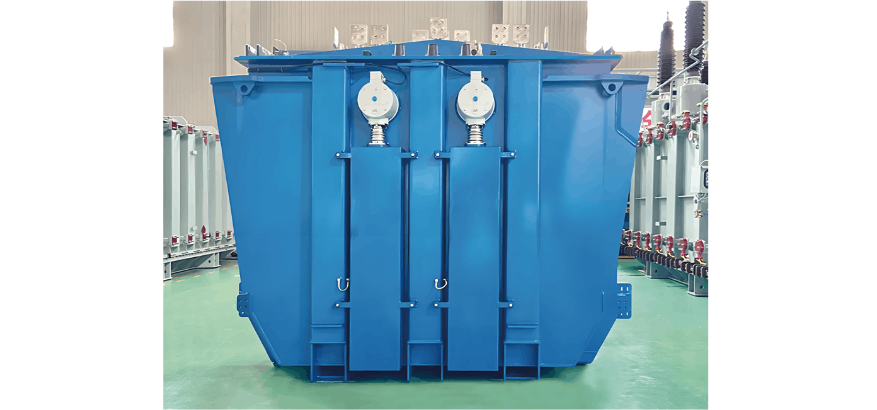
(3) Electromagnetic Interference and Harmonics
A large number of harmonics may be generated in wind power generation systems. Harmonics will interfere with the normal operation of transformers for wind power generation, especially affecting their electromagnetic compatibility. The transformer needs to have a strong anti - electromagnetic interference capability to prevent equipment failures caused by harmonic interference.
3.3 Common Faults and Solutions
(1) Overheating Fault
When operating under high load, if the heat generated inside the transformer for wind power generation cannot be dissipated in a timely manner, it may cause the winding to overheat and even cause the insulation layer to burn out. To avoid this situation, a more efficient cooling system can be adopted, and a real - time monitoring system can be added to monitor the operating temperature of the transformer.
(2) Insulation Fault
Due to the aging or moisture of insulation materials, it may lead to short circuits between windings or between windings and the iron core. By using new high - temperature - resistant and moisture - resistant materials, the service life of the insulation system can be extended. At the same time, moisture - proof measures can be strengthened, such as increasing the tightness of the shell and applying moisture - proof coatings.
(3) Mechanical Vibration and Structural Loosening
During the operation of transformers for wind power generation, they are subject to mechanical vibration impacts caused by changes in wind speed for a long time, which may lead to the loosening of internal components. Regularly inspecting and tightening the internal structure of the transformer and adopting anti - vibration design can effectively reduce the risk of faults caused by mechanical vibration.
4 Optimization Design Schemes for Transformers for Wind Power Generation
4.1 Optimization of Material Selection
(1) Application of High - Performance Insulation Materials
In recent years, new high - performance insulation materials have been gradually applied to the design of transformers for wind power generation, such as polyester films and aramid fibers. The above materials not only have good high - temperature resistance and moisture resistance but also can effectively extend the service life of the transformer, improve the electrical insulation performance of the transformer, and reduce the risk of partial discharge.
(2) Design of Low - Loss Iron Core
The loss of the iron core in transformers for wind power generation directly affects the efficiency of the equipment. Using low - loss silicon steel sheets or amorphous alloy materials can significantly reduce iron loss and reduce heat generation while ensuring the operating efficiency of the transformer. Especially in the application of high - frequency transformers, amorphous alloy core materials show extremely high electromagnetic compatibility and low - loss characteristics and gradually become an important direction for the optimized design of wind power transformers.
4.2 Optimization of Structural Design
(1) Compact Design and Lightweight
Wind farms, especially offshore wind farms, have strict requirements on the volume and weight of transformers for wind power generation. Adopting a compact design and lightweight structure can not only reduce the floor area of the equipment but also reduce the installation and transportation costs. By reducing the size of the iron core and windings and optimizing the design of the transformer shell, the miniaturization and lightweight of the equipment can be effectively realized to meet the special needs of wind farms.
(2) Optimization of Cooling System
Traditional transformers for wind power generation mostly use oil - immersed cooling, but in offshore wind farms, the maintenance of oil - immersed cooling is relatively complicated. Therefore, it is particularly important to adopt efficient air - cooling or water - cooling systems. Optimizing the cooling system can not only improve the heat dissipation efficiency but also reduce the use of cooling media, improving the reliability and environmental protection of the equipment.
4.3 Optimization of Control System
(1) Intelligent Monitoring and Remote Diagnosis Technology
With the development of the Internet of Things and intelligent technology, the control system of transformers for wind power generation is gradually developing in the direction of intelligence. By introducing a real - time data monitoring and remote fault diagnosis system, real - time monitoring of the operating status of the transformer can be realized. When an abnormality is detected, the system can send out an alarm signal in a timely manner and perform remote fault diagnosis, reducing the equipment downtime.
(2) Power Regulation and Load Optimization Control
In wind power generation systems, transformers for wind power generation need to cope with power changes caused by wind speed fluctuations. By optimizing the power regulation algorithm and introducing a load optimization control system, it can be ensured that the transformer always maintains the best working state under different wind speeds. Dynamic power regulation can not only improve the stability of power transmission but also effectively extend the service life of the transformer.
5 Conclusion
Transformers for wind power generation play an important role in modern clean energy. Their performance and reliability directly affect the efficiency of wind farms and the stability of the power grid. In the future, with the development of intelligent monitoring and remote diagnosis technology, wind power transformers will play a greater role in improving the operating efficiency of wind farms and reducing maintenance costs.




















